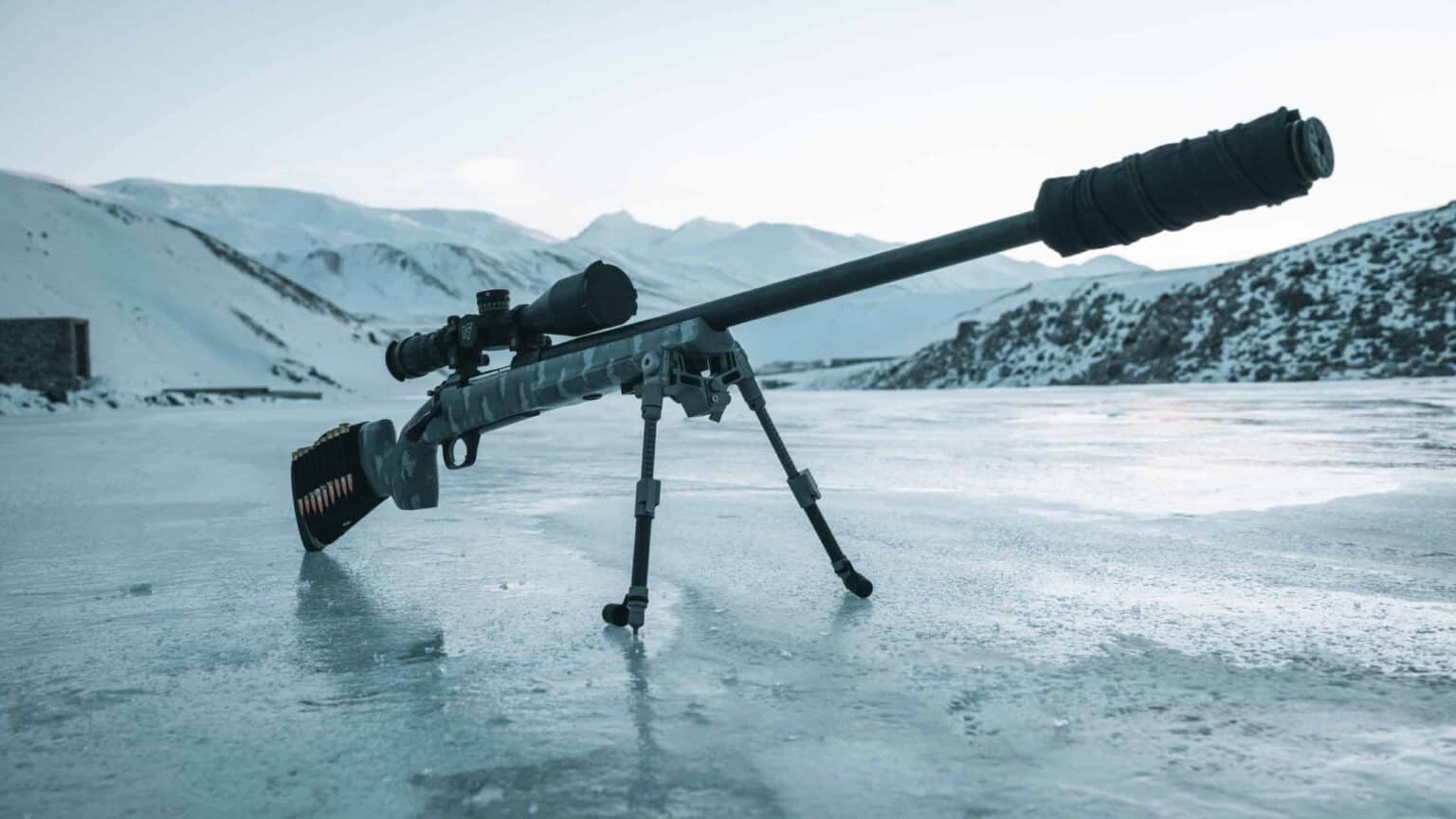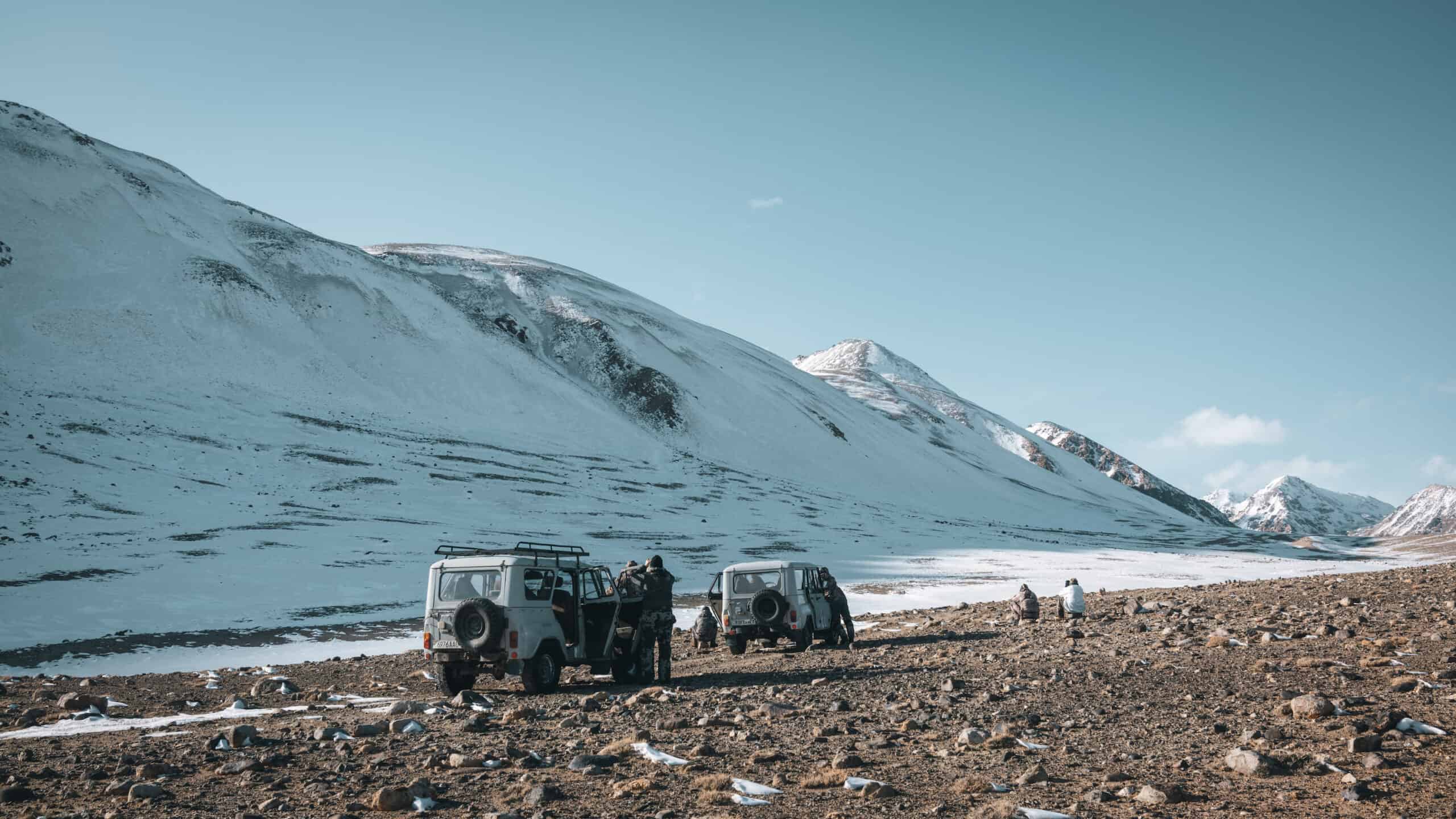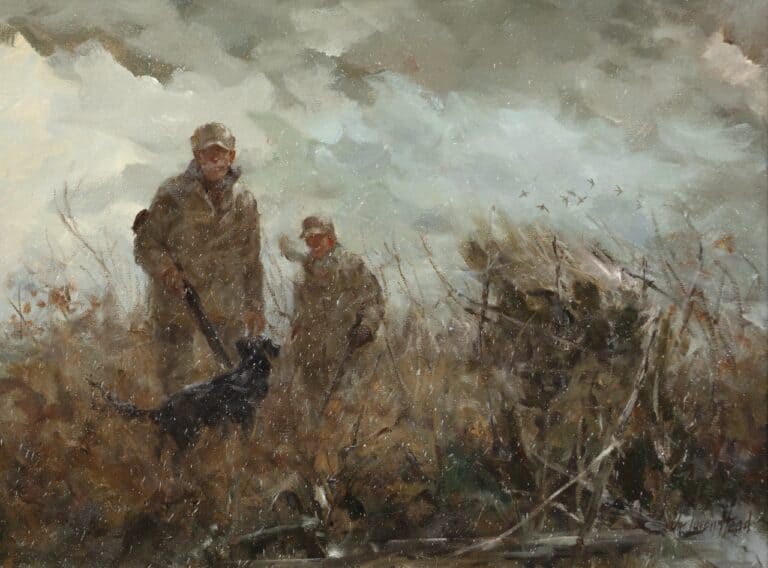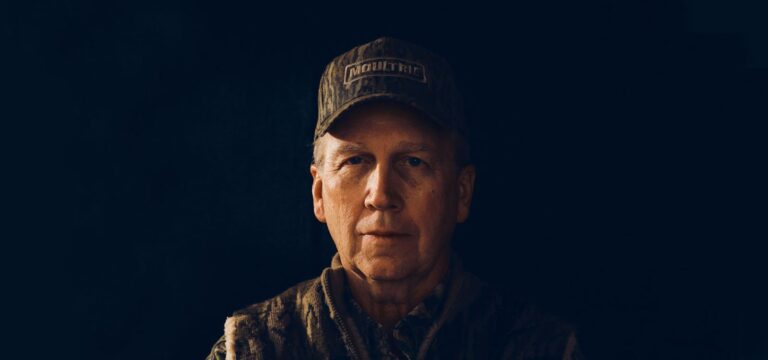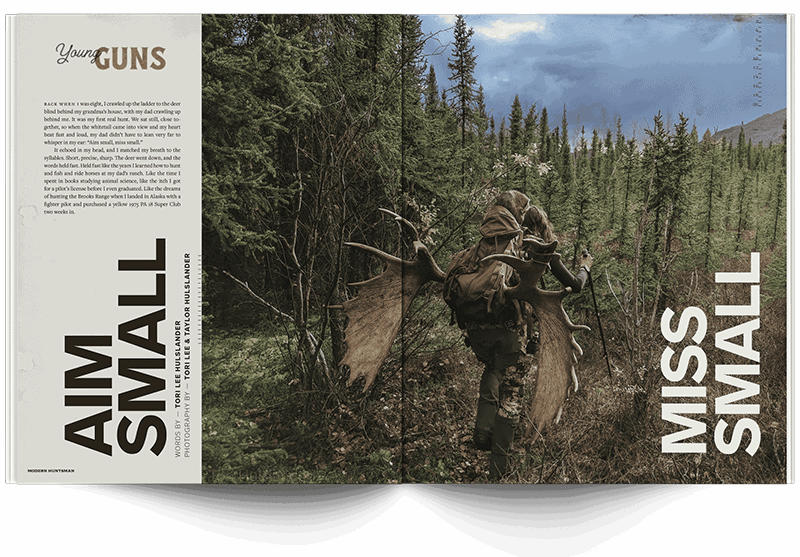There is a certain magic that comes with visiting a country like Tajikistan. The journey to base camp alone brings its own challenges and dramas. My flight from London to Istanbul to meet Gary Raba was but a hop, skip and jump when compared to the miles that lay ahead. We were to hunt in the remote regions of Tajikistan, an endeavor that is not for the faint of heart. The roads in and out promised rockslides and avalanches — and we relished the idea.
From Dushanbe, the capital of Tajikistan, our route to camp followed the Panj River which separates Afghanistan from Tajikistan, shrouded by the dramatic Pamir mountain range. Journeying through this mountain pass makes one feel small; with the mountains rising so steep and aggressive it looks like a scene from “Lord of Rings.”
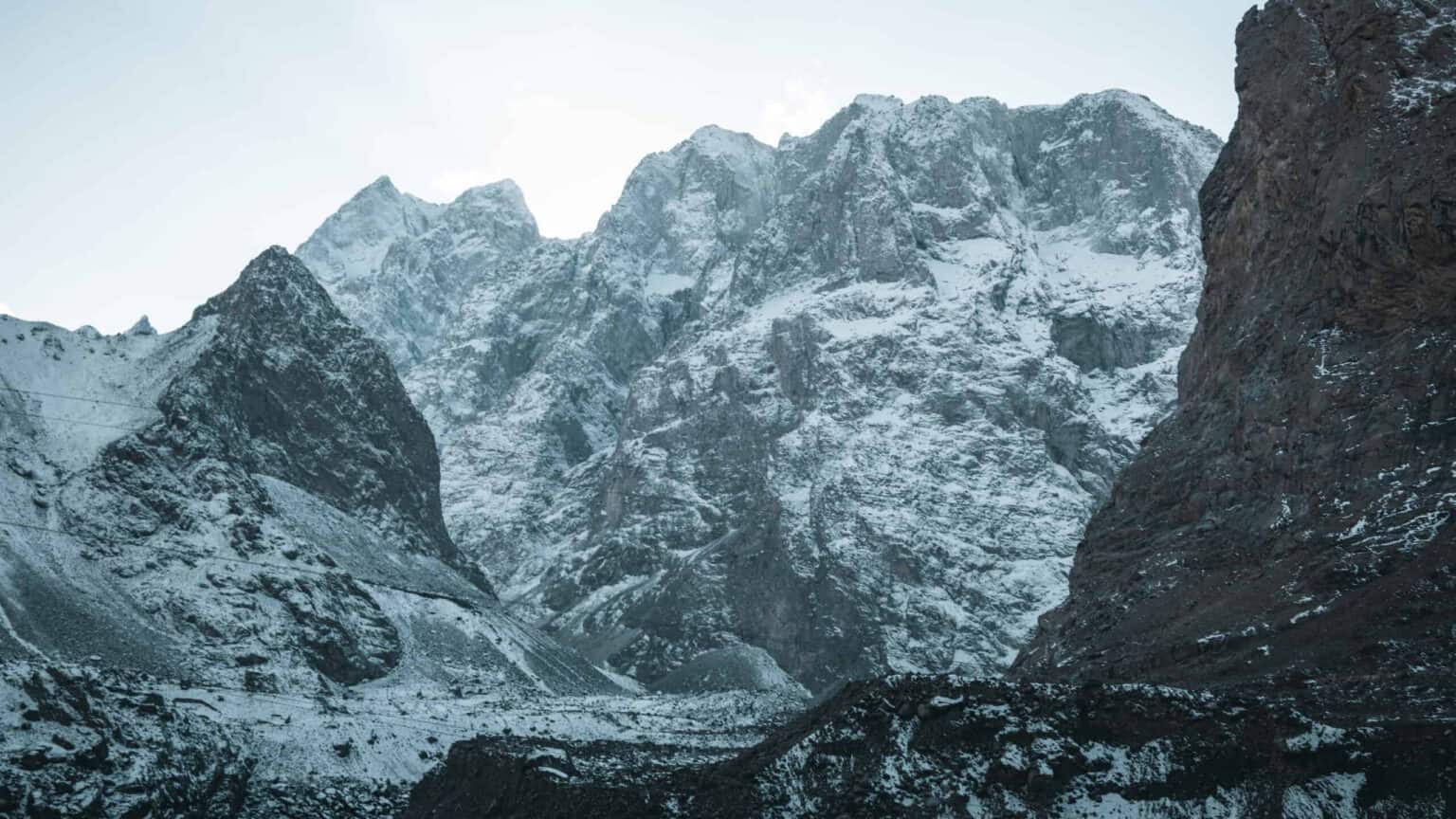
It was clear that we were in a rugged and unforgiving land. Bryan Martin, my friend, and guide from Asian Mountain Outfitters had been travelling this road for many years and was well aware of its dangers. Since his last visit one rock slide had taken out a village, killing everyone and creating a new lake. The Russians made the road we travelled back when it was under their control. Tajikistan gained its independence following the collapse of the Soviet Union in 1991. This created a power vacuum and Tajikistan entered into an ugly civil war that raged for 5 years. After years of turmoil, it was apparent that infrastructure had not been their main focus in recent years. These people were facing real issues and covid-19 ranked pretty low on their list of concerns.
We soon settled into our 600 plus kilometer journey east aiming for the southeast. This was a solid two days of travel and a steady climb with our base camp resting at just over 4,000 meters or 13,500 feet in old English. Our local guide went by the name of Shavkat Lalbekov, a no-nonsense dude that looked like he had stepped out of a gangster film. He was the type that you hoped was on your side if and when things came undone. Given we were driving no more than a couple of hundred yards from Afghanistan, I asked him ‘how was the relationship?’
“Not good,” was the answer and he did not say another word until 40 minutes later we passed an Afghanistan village. Shavkat then opened up and told us that back in December the Taliban had raided the village and executed 100 of the poor souls. It became startlingly clear, we had entered an entirely different world from our own back home.
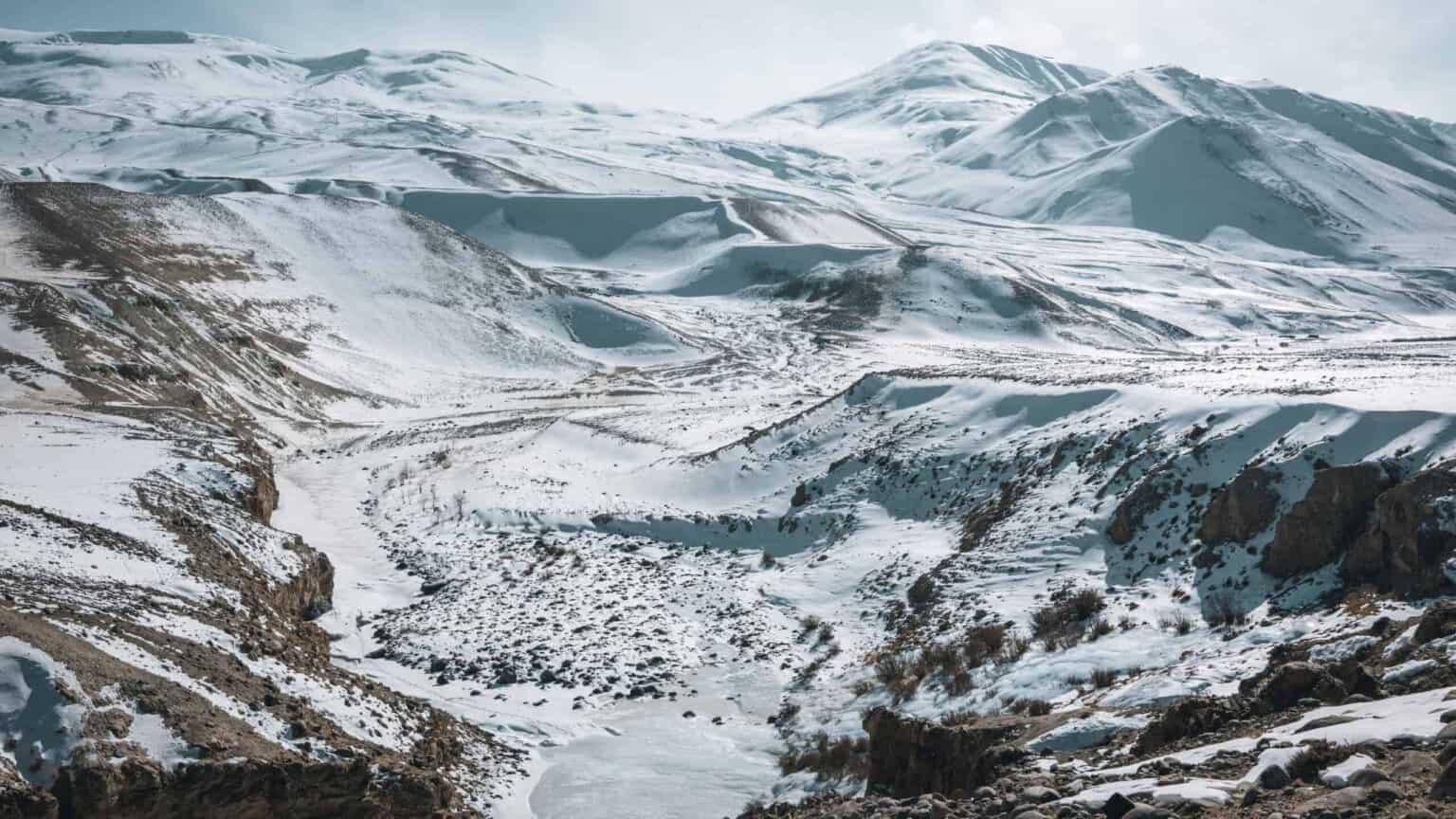
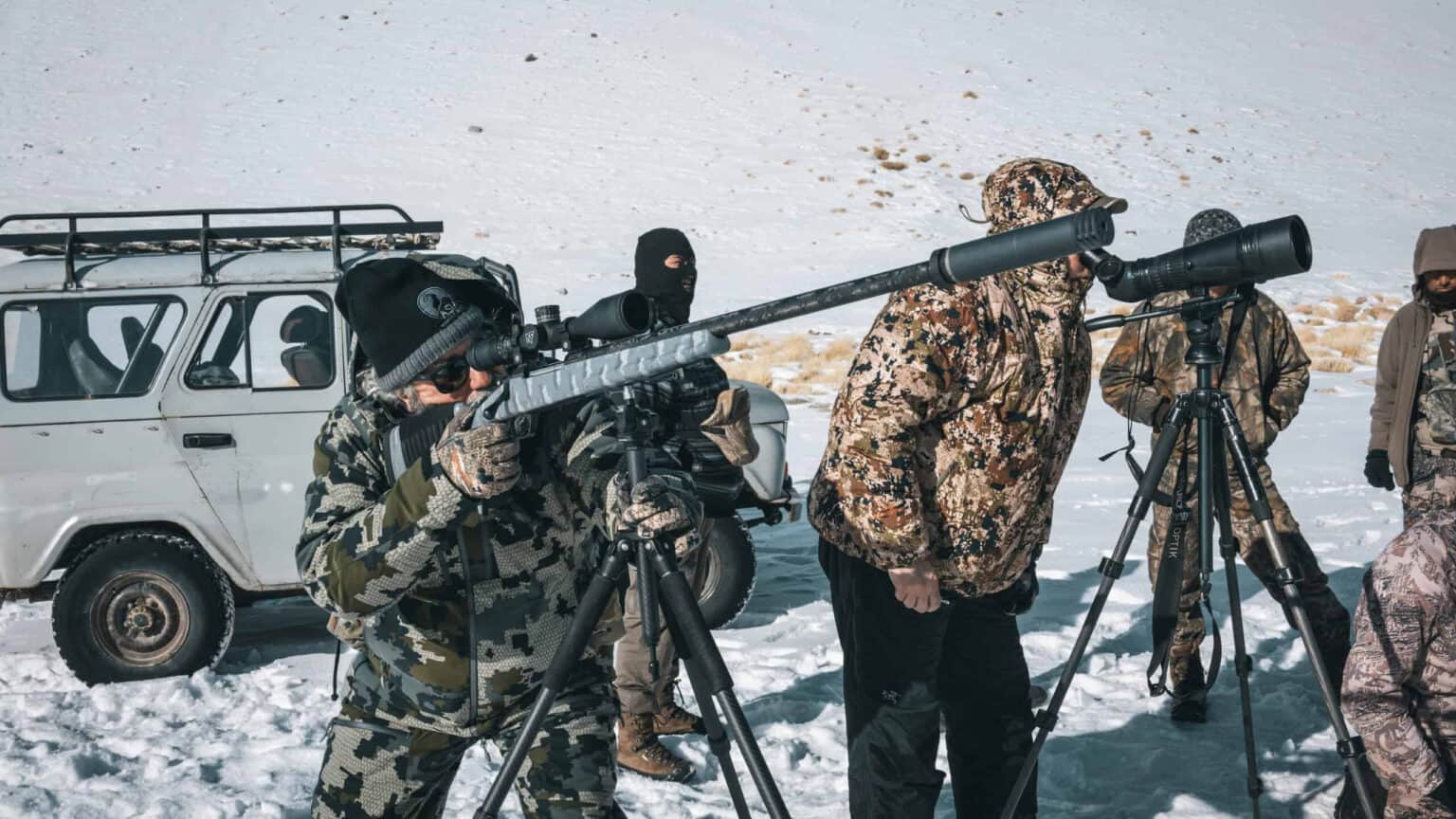
We continued without incident and after clearing a few army checkpoints we arrived at what would be our mountain home for the next few days. The accommodations were without luxury but vastly improved by the smiling faces of the staff and spectacular mountain ranges. We were nested on the side of a mild sloping mountain range looking out towards Afghanistan across the now very frozen river.
Our journey to this point began on a much different mountain in 2019. I was assisting in a long-range hunting course run by Branded Rock Canyon, based out of Grand Junction Colorado. It was here at this top-notch facility that I met Gary Raba. There I spent many hours stuffing poor Gary into rocky outcrops and placing him on scary ledges simulating what he was likely to experience here in Tajikistan.
After much practice, Gary became pretty damn accurate at hitting small reactive targets at 700 yards plus from cramped and awkward positions.
We spent our time in Colorado wisely ensuring Gary was comfortable with his tools, and he took this job seriously. There were times when I could see Gary in his room attaching, detaching the Davos head, lengthening, shortening, and repeating tripod or bipod attachment and detachment. He was learning the new Spartan Precision Equipment gear I had brought to field test. He was unwavering in his focus to be prepared and prepared well for a hunt on foreign soil.
The only thing we couldn’t prepare Gary for in Colorado was the altitude and cold he was to experience here in Tajikistan. Since we had gained significant altitude in a short period, we decided to make the following day an easy one and just test the tools to ensure everything was in order. We brought extra ammo; as testing your rifle and ammunition in the altitude and at the temperatures you will be hunting is essential.
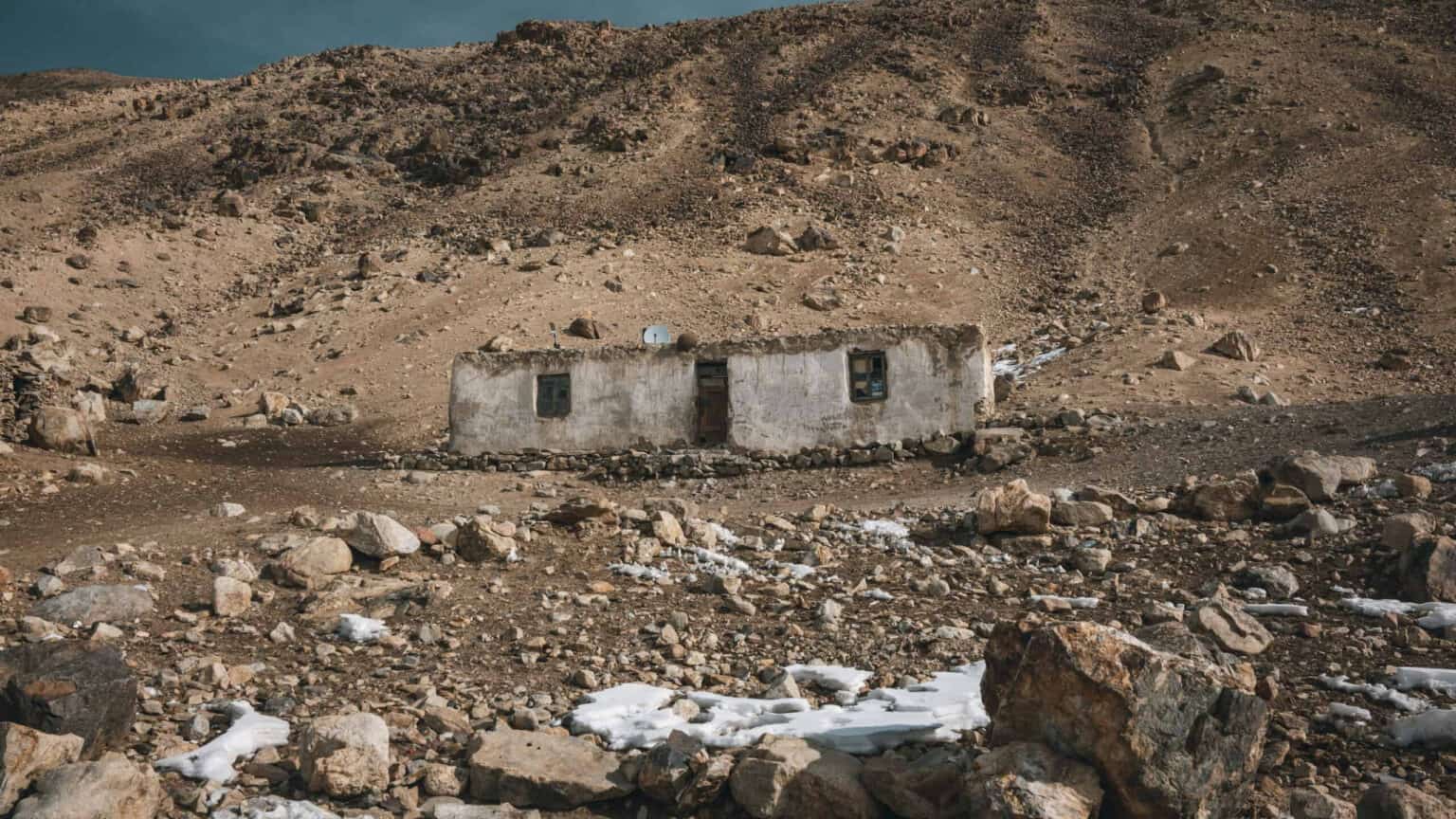
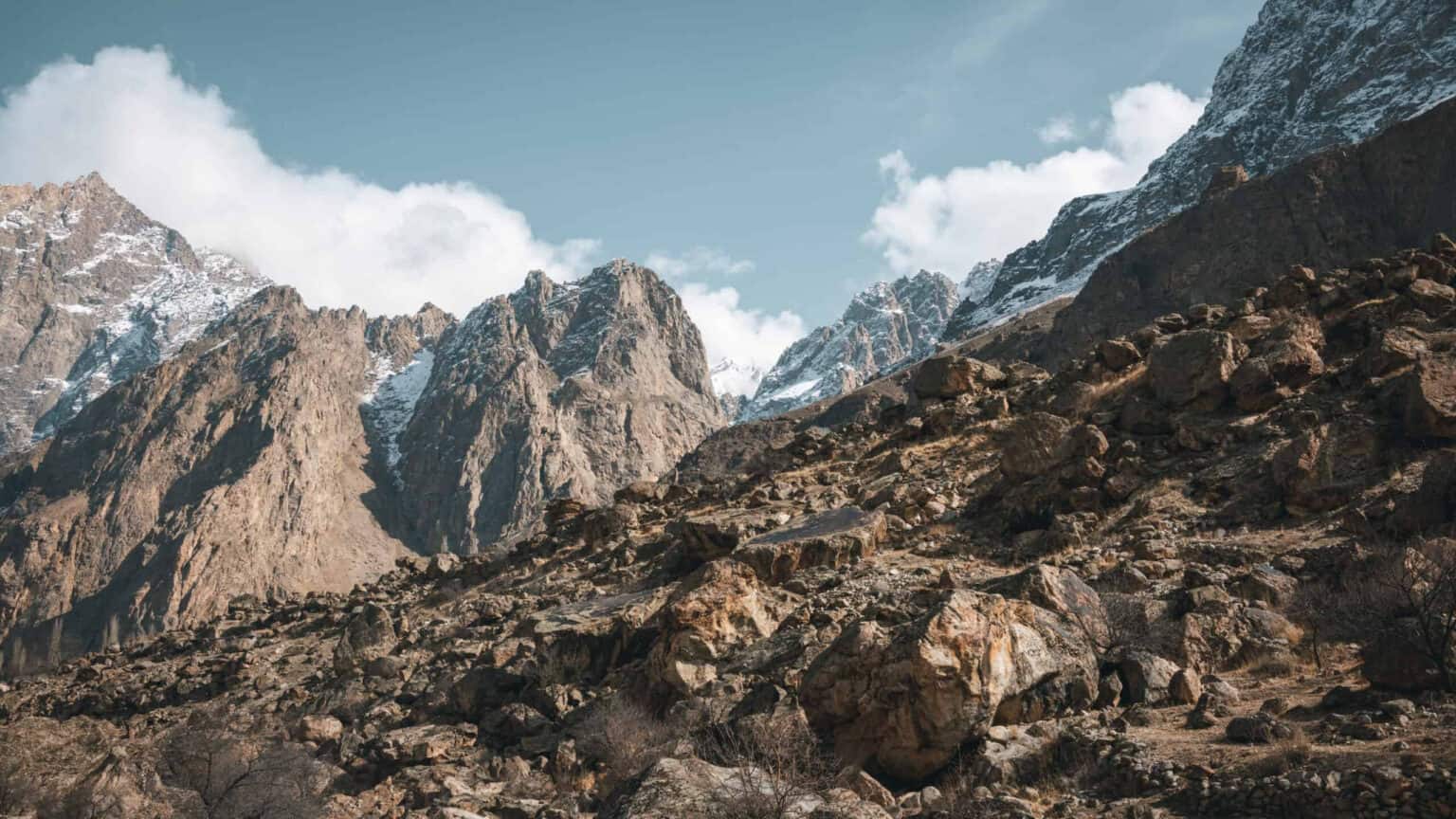

After checking the gear, the first day of really hunting is always like stepping into a new restaurant; all the senses are heightened in anticipation for those new taste bud challenges. Even if it’s not to your liking.
In Asia everything is new, challenging, and different; even the air smells different. We entered a new part of the landscape above the tree line and faced a mountain desert. Everything was frozen and you start to wonder, ‘how the hell does anything live here?’ According to Bryan Martin, the toughest animals on the planet. I would not argue with his viewpoint.
Be it Marco Polo, Ibex, Argali, Markhor, Tur, or indeed Urial these fantastic animals share some commonalities, they are eking out an existence on poor grass and shrub. It’s an absolute wonder to me how they manage to put on weight and grow horns, let alone thrive. A lot of mountains are required to sustain just a few and this is where your guides are worth their weight in gold. I consider myself a more than reasonable spotter when it comes to finding game. These people are, however, are in a different league, they can find that “needle in the haystack.” Without these skilled spotters, my hit rate would have reduced by 90%.
We spent hours glassing empty mountainsides, picking apart the sparse, frozen ground in search of life.
Gary is what I term a “Memory Hunter,” a breed a little different to the classic “Trophy Hunter,” nothing wrong with either if you ask me. Gary is not driven by the biggest and the best; he wanted a mature animal that he could keep to remind him of the adventure. He didn’t give two hoots what size it was. I like that in Gary, it sits well with me.
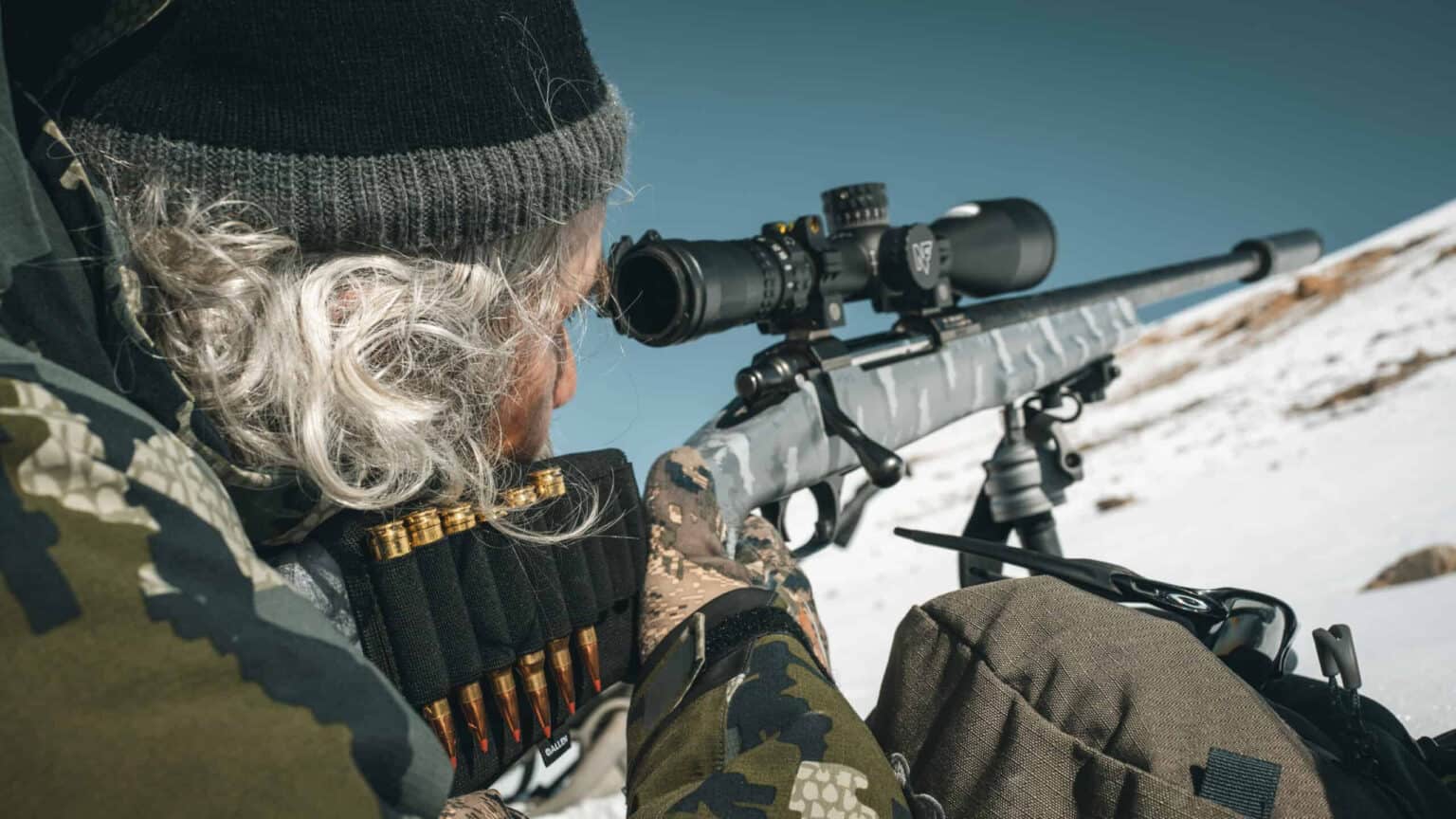
Mammals are not long-lived in this area. Teeth wear fast and once they are gone, the animal is set to starve. Nature, for those that are ill-educated, could not be more cruel. A well-placed shot would be my choice for an exit plan every time, followed by Snow leopard, Starvation, then Wolves. In that order.
The guides spotted some Ibex. We passed on a few that looked like they had some years ahead and moved on. A few more long, cold hours in, and the guides located some more Ibex with a couple of old boys, a little like Gary and I, that had passed their ‘sell by’ date.
Gary made his mind up and we were set for the hunt. Compared to European game these beasts were nervous. Many hours were spent getting nowhere slowly. We painstakingly got our man to 360 yards and found a good place for him to take the shot. The secret is to buy time, which is not always possible, but important to seize it when and if it is. We were confident in the tools and our hunter. We set up the Spartan Ascent System as a mini tripod so Gary was able to take a prone shot. We had a 15 plus degree angle and an Ibex that was refusing to stand. This is what Gary had trained for, and he confidently took the shot. A shot to the liver and it was game over.
We were eating Gary’s Ibex that night served raw on bread and it was truly delightful.
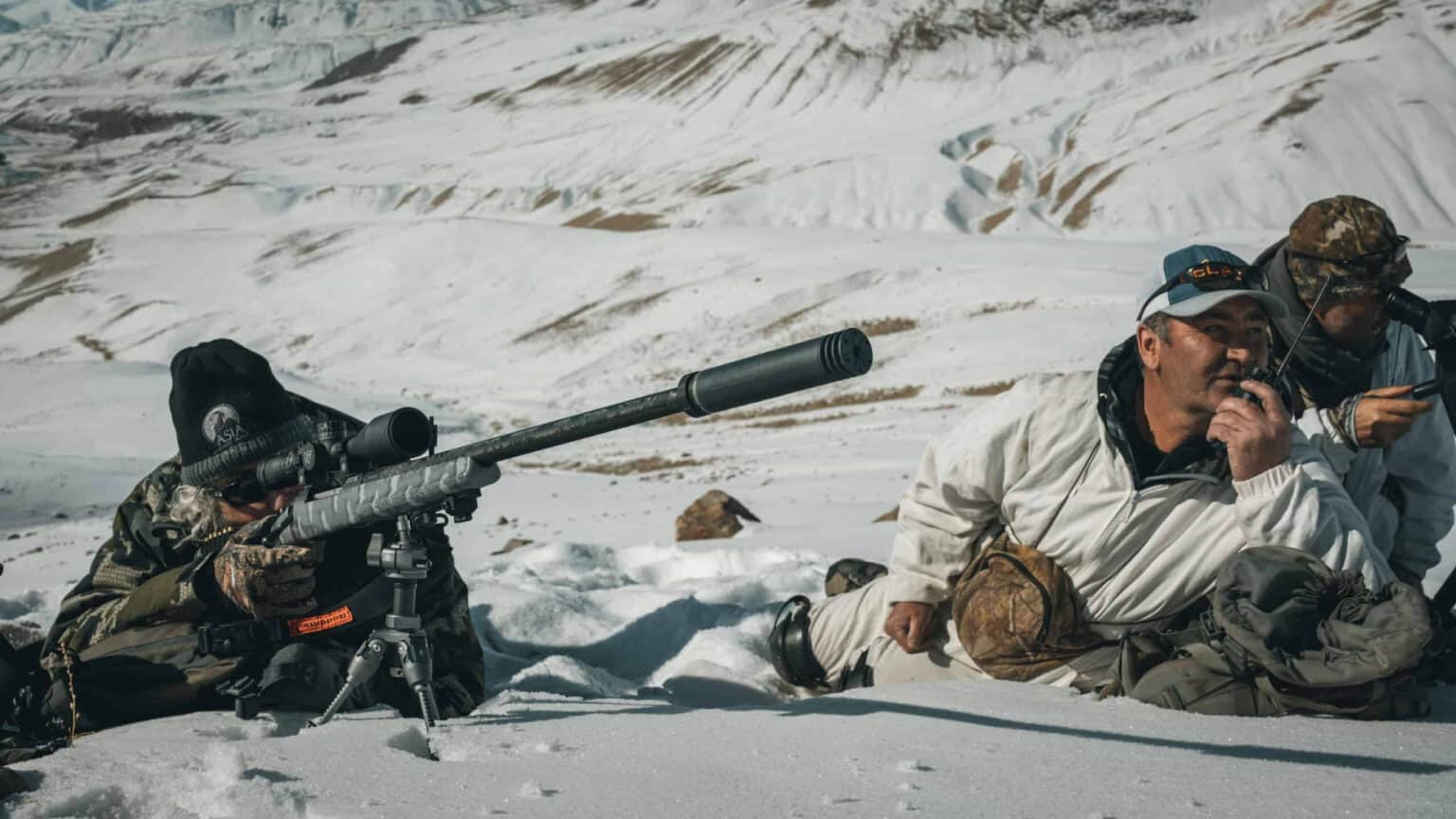
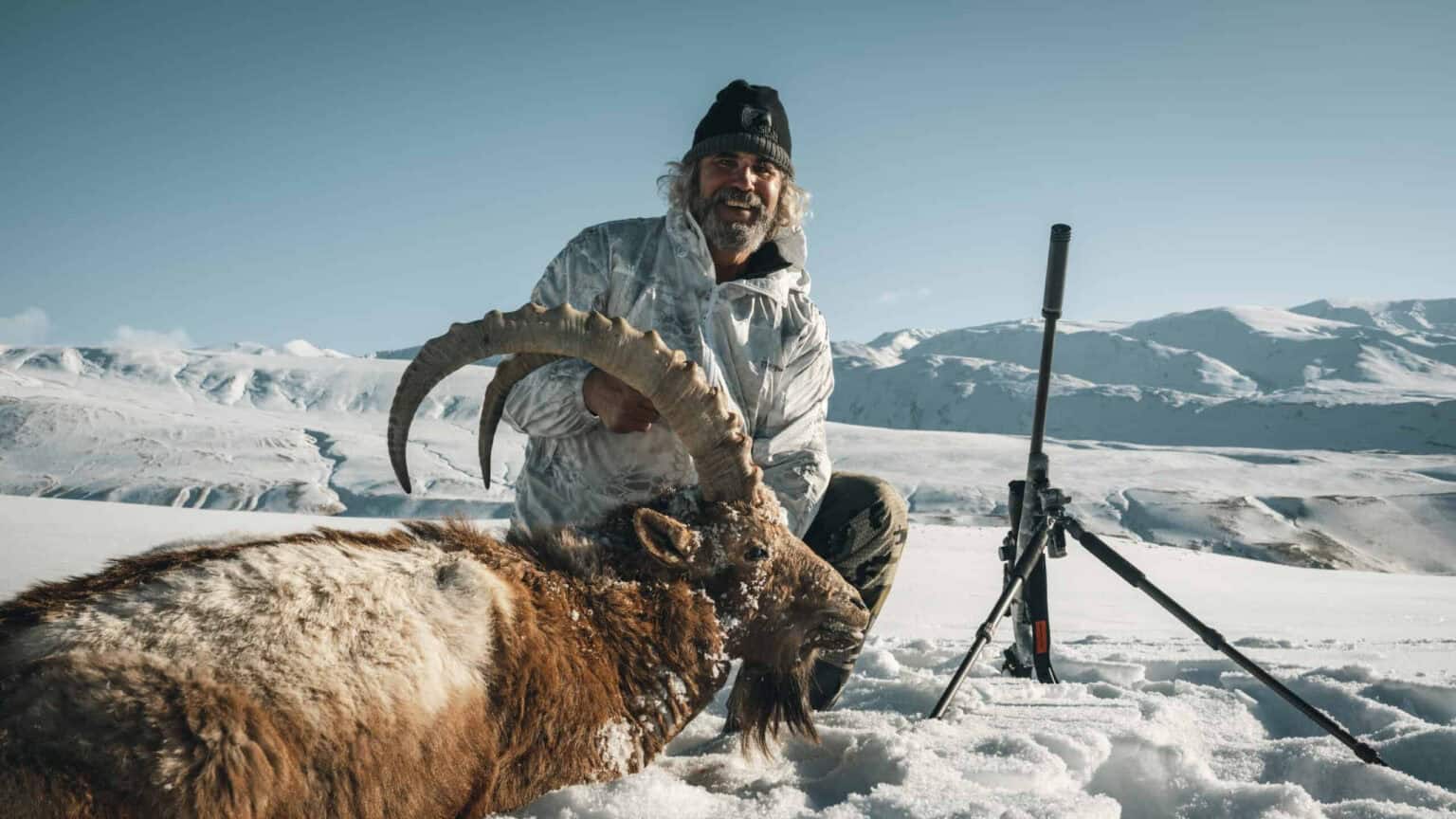
The next day brought new terrain, which developed into a lot of climbing, followed by yet more climbing. It was a hard day; even the guides looked like they were feeling it.
After beginning to think that the entire mountain range was void of animals, two Marco Polo revealed themselves. These were what we had been looking for, old Rams long past their prime. The day was cold and still; both Polo were on a small rock outcrop with one standing and the larger lad seated. The ground was open and exposed between us with no cover whatsoever. Our choices were limited; we either returned another day or attempted to come around the back of the range. This would mean many man-hours of work and daylight was not on our side. The other option depended on a direct question: “Gary how good are you with that rifle?”
I had serious confidence in Gary. I had seen him shoot very well at Branded Rock Canyon, but hunting wild game is so very different from hitting plates. Either way, we still had to lose some distance and this was going to be a challenge with no cover to speak of. Bryan spotted an outcrop that we crawled to, hoping not to be spotted. There were no guarantees but it was our best option given the time we had.
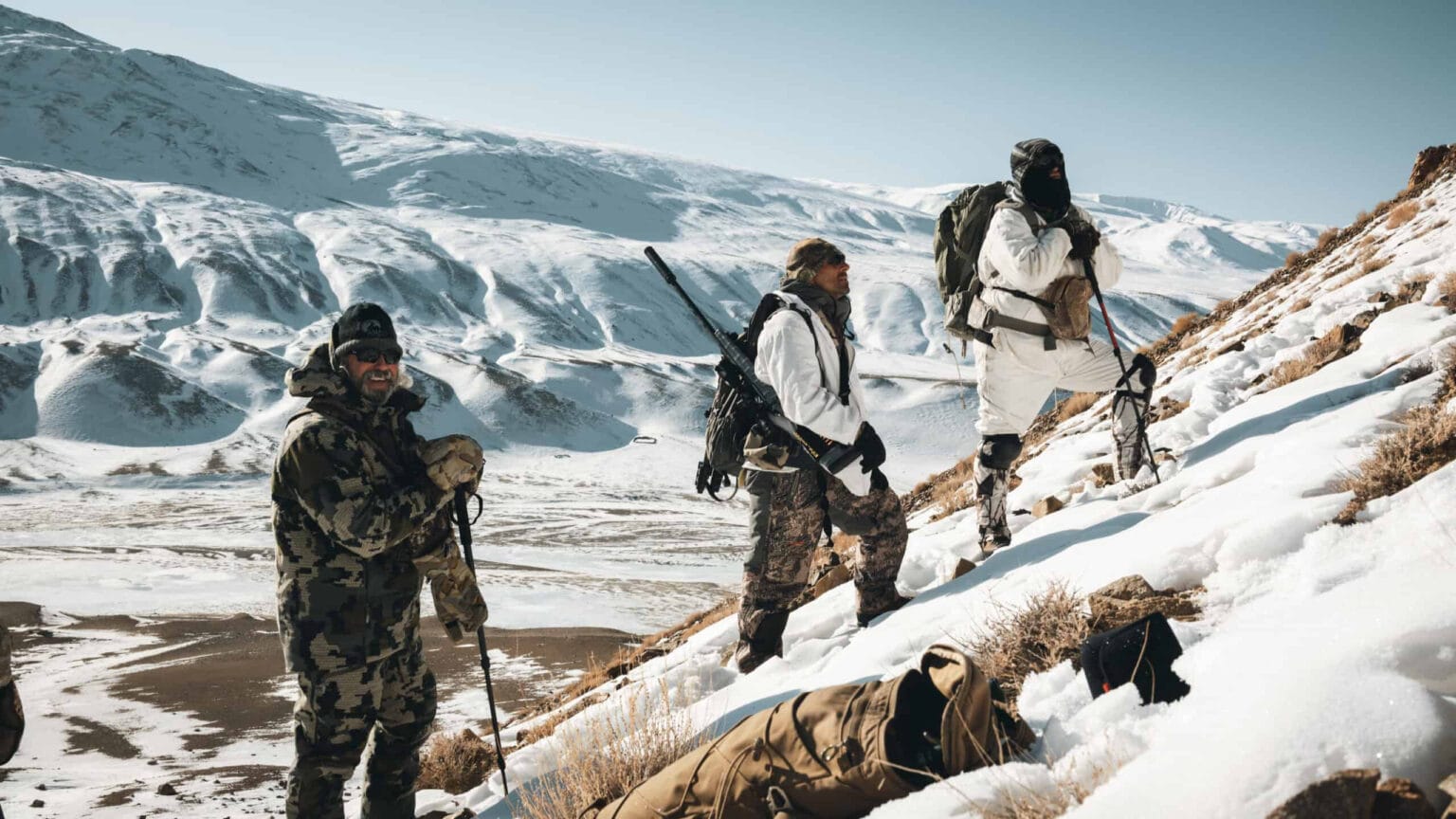
Miraculously we managed to get to Bryan’s Rock, which offered us a little cover and a reasonable platform for Gary to set up his tools. Our problem was that we were still 1,100 yards off target. Yes, 1,100 yards.
I do not consider myself a long-range hunter, I like my animals to turn out dead and I find the more you stretch the distance the less you achieve the desired result. In Europe, I would consider a good ethical shot to be 300 meters. This I can do comfortably and without worry. Start adding a few hundred meters and things open up to ever-increasing uncertainties. I also enjoy the challenge of getting close. The longest shot I have taken was on an Ibex at 698 yards.
Gary was now considering a shot that was almost twice that of mine and I had considered my own a crazy distance. I was going through an internal ethics battle with myself while on the side of the mountain, should he take the shot? In the end, I believe I came to the right conclusion, which was this was not about me, it was about Gary, and he was big enough and ugly enough to decide those factors for himself.
So Gary, as cool as a cucumber, started to set up for the shot. He used the Spartan Ascent splayed out mounted in his gunsmith adapter just in front of his magazine. He looked rock solid, but this was still 1,100 yards. He wound his Nightforce Optics up for good magnification and Bryan let him have his turret figures. We discussed the light wind in great depth and all agreed that we had to allow for it, even if visually there were no indicators on the rock outcropping.
Now, all we had to do was wait. This old ram was in no rush to get up and this could be a long sit. A Marco once up tends to quickly move so Gary had that added pressure in the back of his mind. Finally, after what felt like hours, the old lad rose to his feet and promptly turned away from us. He was going to do exactly what Marcos do — and head off. Taking a shot at a moving animal should not even be considered at these ranges in my opinion.
If Gary was going to make this happen, I figured he had 2 seconds. He took the shot. Gary planted a bullet into the ram, swiftly followed up by not one but two more shots. All three hit home. It was indeed some amazing shooting from Gary and full marks to him for dropping the ram efficiently.
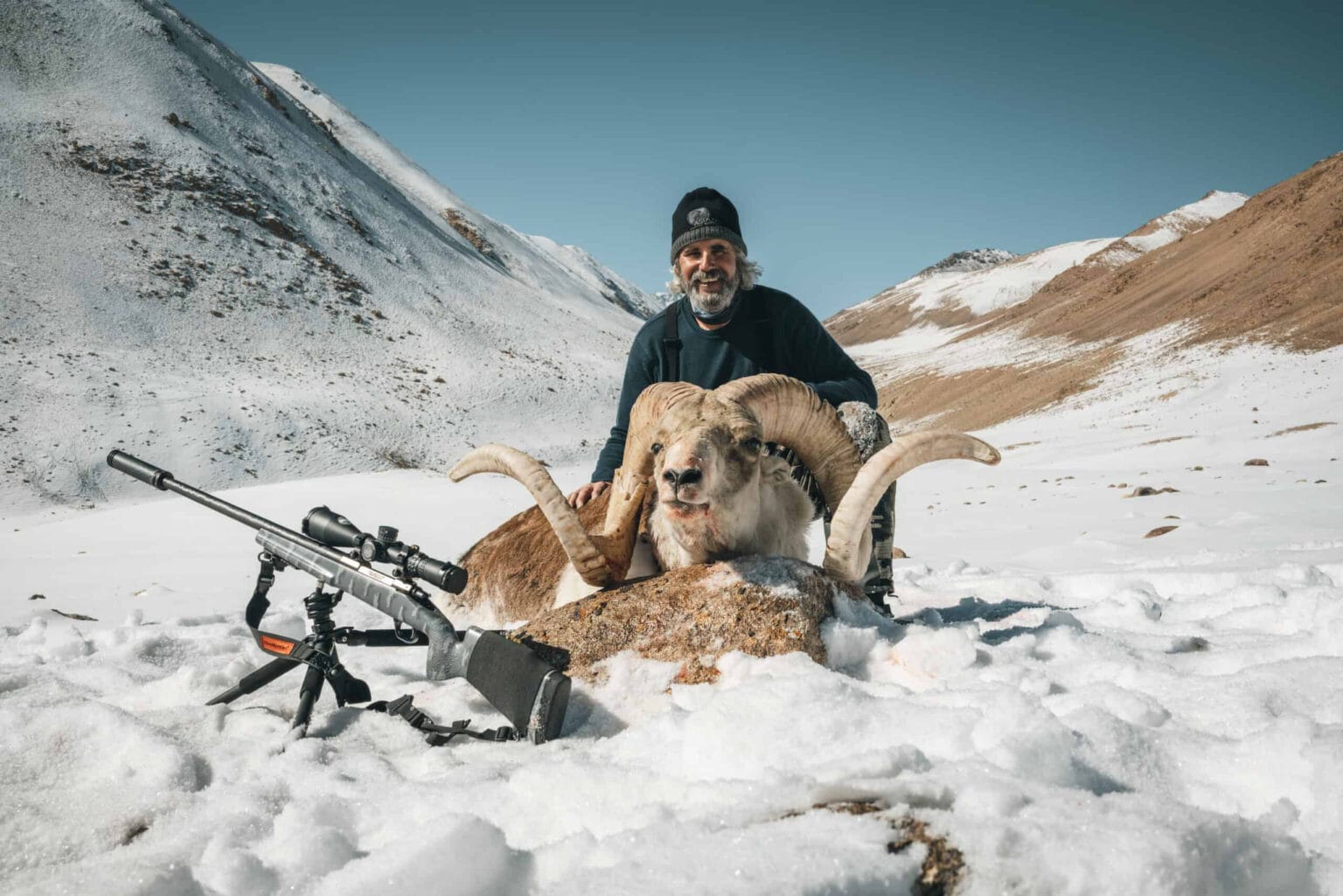
The guides with more lung capacity than us recovered the ram and we were able to eat some fresh Marco that same evening.
Our journey didn’t end there, this is but a chapter in our Asian adventure; but it was an adventure that sent us home with what we were after, memories to last a lifetime. We were successful and content in the knowledge that we had done our do-diligence and prepared our minds, bodies, and tools to ethically and respectfully take the life of these resilient beasts in the fierce mountain desert of Tajikistan.
The Mr. G Formula
There are a few small but important tips for coming to a country like this that I would recommend.
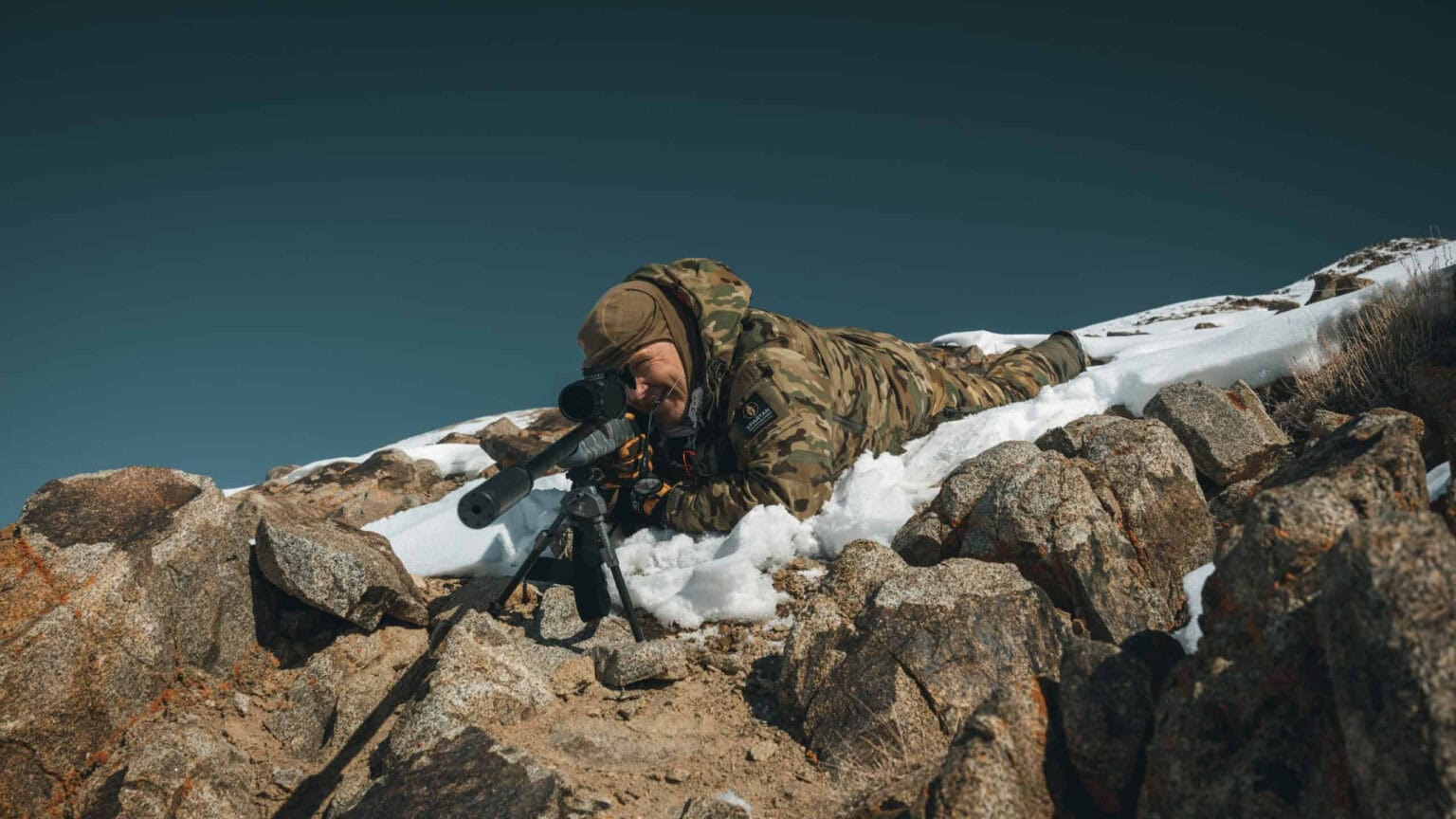
- Food is often very good in these parts of the world, but your stomach might just not agree, so taking probiotics for a few weeks before your trip is not a bad idea. Altitude is very likely to make you feel rough for a day or two, the best case it will sap your energy until your body tunes in. I tend to drink much more fluids when gaining altitude. I avoid the sweet stuff, just stick to good old-fashioned water. If you can get your hands on some Diamox, a drug used to treat Glaucoma and Epilepsy, it can be very handy for treating altitude sickness. Talk to your doctor and seek their advice first.
- My advice to hunters planning such an adventure, do not practice from the shooting bench, as they are not common in the mountains. The Mr. G formula is this; get shooters shooting from awkward angles and positions. This ensures they are best prepared for the real world of hunting.
- The next step is learn to use enough magnification but do not overdo it. Keeping the target small helps ensure the shooter stays on spot. Too much magnification can give the shooter a false sense of security and at long ranges, this can spell trouble. To make a truly ethical shot, a hunter must be confident that he can deliver a clean kill. The Boone and Crockett Club’s Fair Chase statement says that one must “attain and maintain the skills necessary to make the kill as certain and quick as possible.”
- Always bring extra ammo. Your rifle and ammunition need to be tested at altitude and the temperatures, you will be hunting. Camps should have a small metal reactive target, rather than shooting at rocks.
- Even if you consider yourself as fit as a “Butchers Dog,” working the human body at these altitudes is a total lung buster. Do yourself a big favour if embarking on an adventure at altitude and physically prepare yourself as best you can. You will get far more enjoyment and satisfaction if you exercise hard beforehand.
- Where my viewpoint may change from those more qualified than myself is after the animals have been spotted by your guide, continue on your own. This is big country and chances of getting within 300 yards of these wariest and heavily preyed upon animals is unlikely. If you are minded to try, your chances will be much higher if you proceed solo. There is also something very real about being solo on a mountainside in these distant lands.
- It is okay to be what I term ‘uncomfortable,’ which is why we do these things if we are honest with ourselves, but you do not want to freeze to death on the mountain.
- In such conditions, the right gear is everything. I am a layer’s type of guy and have never owned an all-in-one jacket. This is what I have in serious conditions: Merino Base Layer – First Lite or Woolpower. Synthetics are also excellent but bacteria love them and your companions will not.
- Once away from the skin I tend to go synthetic for the simple reason I get more warmth for the same weight. I have a very lightweight Patagonia Jacket synthetic down which goes on next. I’m topped off with a membrane.
- In cold dry environments, I am a big fan of Ventile, the top Venitle people are Redkettle Hunting gear. For damper climates, I go Gortex and this tends to be Taiga based in Sweden. This setup works well when on the move but it will not sustain you when stationary. For this, I have a second Down Jacket, in this case, 2 Lbs of 900 down, made by PHD. based out of the UK. These guys are not cheap but they know their game, truly excellent gear. Once quilted in my 2 down jackets I can lie around all day. I repeat this process with some Taiga over pants that finish just below the knees.
- For my boots, always go a little larger than is needed. Tight boots mean cold feet. The same goes for gloves. Mitts are so much warmer than gloves. Some thin under gloves are also a good consideration.
- Keeping clean in these places is by no means impossible, you just go about it differently. Spending much time in the mountains and always travelling light means I tend to use what is about. I have never taken wet wipes or toilet paper and have always managed to use what nature provides. I do take African black soap. Snow showers in the snow line, sphagnum moss, or anything I can find in the tree line. In the mountain huts they can often rig up a sauna which is great for sweating out the rubbish, excellent on the tired body, and prepares you for the snow shower you will need after. Trust me you will feel so much better, it just sets you up well for the next day.
